Search
Search Results
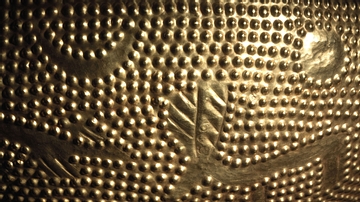
Image
Bronze Age Gold Bowl Detail, 1100 BCE
Bowl, gold. c. 1100 BCE. Zurich-Altstetten. Canton of Zurich. With images of stags and does grazing under round suns and crescent moons, this heavy vessel made of pure gold depicts both heaven and earth. It was buried by a farming community...
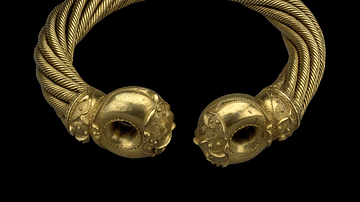
Article
Ancient Celtic Torcs
In ancient Celtic cultures, torcs were a common form of jewellery and were made from bronze, copper, silver, and gold. Torcs were not just exquisite works of Celtic art but also identified the wearer’s status and perhaps were believed to...
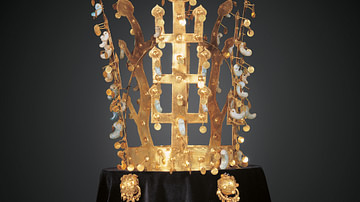
Image
Silla Gold Crown
A gold crown of the Silla kingdom, Korea. From the Auspicious Phoenix Tomb, Geumseong (Gyeongju), 5-6th century CE. The crown is made of sheet-gold and decorated with granulation and crescent-shaped jade pendants. The tree-like upright parts...
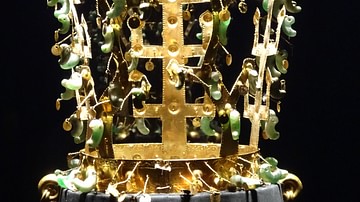
Image
Gold Silla Crown
A gold crown of the Silla kingdom, Korea. From the Great Tomb at Hwangnam, Geumseong (Gyeongju), 5-6th century CE. The crown is made of sheet-gold and decorated with granulation and crescent-shaped jade pendants. The tree-like upright parts...
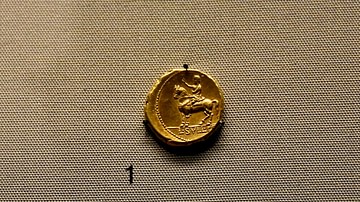
Image
Roman Republic Gold Aureus
This gold aureus is one of the first Roman portrait coins. Roman Republican coins did not usually depict living people, although a statue of the politician Sulla appeared on a coin during his lifetime. The son of Pompey the Great adapted...
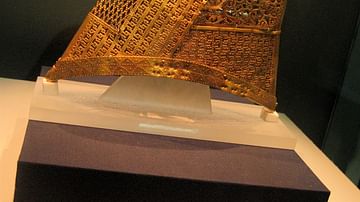
Image
Gold Silla Cap
A gold Silla crown cap from Cheonmaching (the 'Heavenly Horse Tomb'), Gyeongju, Korea. It is made from four gold plates bent and riveted together. 6th century CE. National Treasure No. 189. (Gyeongju National Museum, South Korea)
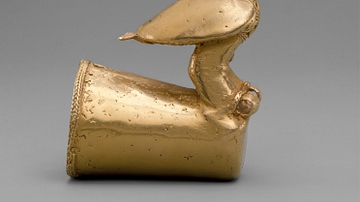
Image
Gold Staff Finial, Zenu Culture
A gold staff finial made by the Zenúes, a people who belonged to the Zenú tribe of ancient Colombia. It features an owl on the edge with a majestic crest, polished golden wings and false filigree openwork on its chest. Distinctive features...
![A Gold Earring from Ur III [Reverse View]](https://www.worldhistory.org/img/c/p/360x202/7468.jpg?v=1713468543)
Image
A Gold Earring from Ur III [Reverse View]
The lower surface of the earring . Six gold spheres were lost and were not replaced. The cuneiform text is read vertically, from the upper surface downwards on each segment, and it continues from right to left. One of a pair of gold earrings...
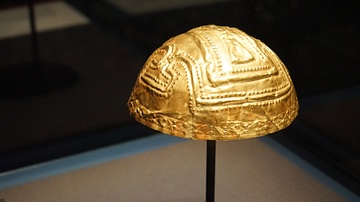
Image
Colombian Gold Helmet
Gold alloy (tumbaga), 500 BCE - 700 BCE. Colombia. Gold was an important material in ancient Colombia. It had a symbolic association with the creative energy of the Sun. This helmet would not have been used in battle but instead would...

Definition
Renaissance Humanism
Renaissance Humanism was an intellectual movement typified by a revived interest in the classical world and studies which focussed not on religion but on what it is to be human. Its origins went back to 14th-century Italy and such authors...